Welcome to the December edition of QC Research Highlights! This month, we will feature a few articles by QC faculty authors who are interested in bilingualism, cultural exchange, and the migration of literary forms from one language to another.
Thanks to all the authors who have contributed their works.
All the works featured in this series are available to read and download for free from CUNY Academic Works.
Education
Embracing multilingualism to improve pedagogy, Marcela Ossa Parra (Elementary and Early Childhood Education) and co-author Patrick Proctor of Boston College argue for a pedagogy of translanguaging in their article, “The Translanguaging Pedagogies Continuum.” Translanguaging pedagogy steps away from monolingualism to integrate students’ home languages and other communicative repertories. The authors, using the metaphor of the corriente (current) put translanguaging pedagogical practices along a three-point continuum (listening to the corriente, channeling the corriente, and flowing with the corriente) depending on how thoroughly the instructors integrate multilingual students’ language practices into the class. Translanguaging pedagogy breaks up the artificial notion of language separation and creates a method of valuing students and their home cultures in the classroom. Teachers who do not speak the same languages as their multilingual students can still engage in this form of pedagogy; Ossa Parra and Proctor provide some strategies at each point along their continuum and explain the benefits of using translanguaging pedagogy – for both the students and the teacher. At every point of the continuum, it is essential to recognize students’ language practices – and by extension, their cultures – as valuable in the classroom.
On the other hand, there is also a business aspect to cultural exchange, even in the field of education. Daisuke Akiba‘s (School of Education) article, “Recruitment of International Students through a Synthesis of English as a Second Language Instruction, Social Justice, and Service Learning,” is interested in how American colleges and universities can attract international students. In particular, he is interested in strategies for institutions other than large, well-known research universities. Akiba describes a pilot program undertaken at a diverse, urban public college in the northeastern United States, with the goal of attracting Japanese students to study education there. Assessment revealed that the students in question were interested in short-term programs, the opportunity to improve their English with content-area, credit-bearing courses, and low tuition. The pilot program had a social justice focus and sought to meet these specific student needs, thus filling a niche that more well-known institutions might not. Akiba suggests this strategy may be successful for recruiting international students to regional colleges and universities.
English
Of course, the results are quite different when speakers of the language are not directly involved. Roger Sedarat (English) looks carefully at Walt Whitman’s use of Persian poetry in “The Battle Trumpet Blown!”: Whitman’s Persian Imitations in Drum-Taps. Whitman’s exposure to Persian poetry was largely through Ralph Waldo Emerson and (especially significant for this article) William Alger. Sedarat argues that Whitman was deeply influenced by Persian poetry during the Civil War, using it to move away from the individualism expressed in his earlier works to seek mystical transcendence. Sedarat carefully analyzes Whitman’s imitations of specific poems from Alger’s book, The Poetry of the East, in Whitman’s collection Drum-Taps. He shows how Whitman turns the notion of spiritual surrender found in these poems to his own ends in making an argument for national unity, while at the same time employing Orientalist tropes of the “old and meditative East.” Sedarat’s article is interested in how Whitman imitated Persian poets at the very moment that he became a distinctly American poet, achieving the “transformation of his American vision through an Orientalist gaze toward Iran.”
This is one of a series of blog posts featuring faculty publications in CUNY Academic Works. Academic Works is a service of the CUNY Libraries dedicated to collecting and providing access to the research, scholarship, and creative and pedagogical work of the City University of New York. In service to CUNY’s mission as a public university, content in Academic Works is freely available to all.
If you would like to share your research in Academic Works, please see this guide to Academic Works, or contact Nancy.Foasberg@qc.cuny.edu.
Share:
